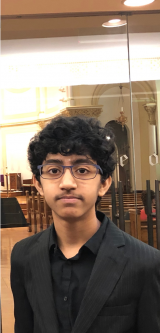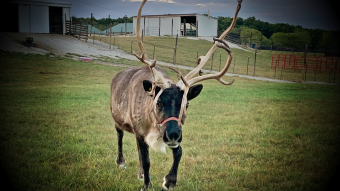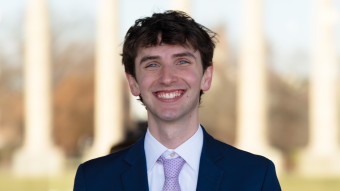September 28, 2020
Contact: Brian Consiglio, 573-882-9144, consigliob@missouri.edu
When Raghuraman Kannan saw his friend and fellow University of Missouri researcher Kamlendra Singh being interviewed on television, he called him to congratulate him on his work. During the conversation, Singh learned Kannan’s son, Saathvik, was interested in computer programming — a skill Singh could use help with in his research. Singh invited Saathvik, who was a student at West Middle School in Columbia, Mo., at the time, to collaborate with researchers at MU to identify mutations in the virus causing COVID-19.

Saathvik Kannan teamed up with Singh and Austin Spratt, an MU undergraduate student studying mathematics, and together they analyzed protein sequences for COVID-19 samples from all over the world. They identified 3 specific mutations, D614G, P323L and C241U, that were co-existing in every single case of COVID-19 in the United States, which could suggest why the virus seems to be so infectious in the United States. Their newest unpublished research indicates that resurgent COVID-19 viruses in European countries also have all three of the identified mutations in nearly all European cases. The findings define the dynamics of COVID-19 evolution, and they can be useful for developers of COVID-19 treatments or vaccines to help them consider which mutations in the virus are necessary to target.
“By painting a more complete picture of what mutations are occurring in the virus, we can provide specific information to assist those developing treatments and vaccines for the disease,” said Singh, the project supervisor, professor in the MU College of Veterinary Medicine, Bond Life Sciences Center investigator, and assistant director of the Molecular Interactions Core. “Our overall objective is to better understand what is causing the virus to be spreading so rapidly and efficiently, and our research has shown there may be multiple mutations involved that need to be considered when developing antiviral drugs or vaccines.”
Singh mentored Saathvik Kannan and Spratt by allowing these students to use their computer programming skills to advance scientific research aimed at addressing the challenges of the COVID-19 pandemic. By identifying patterns in the various sequences of COVID-19 virus samples from all over the world, the students were able to paint a clearer picture of co-evolving mutations occurring inside the virus that is causing it to spread.
“The antiviral drugs that are currently being made to treat COVID-19 are developed based off the current model for the virus,” said Spratt. “But as these mutations are co-evolving and causing the virus’ structure to change, the model becomes less accurate and so the current antiviral drugs may become less effective on the mutated versions of the virus. Therefore, by getting a clearer picture of how the virus’ structure is evolving, we can create better models of the virus so better antiviral drugs and vaccines can be developed.”
Now a freshman at Hickman High School, Saathvik Kannan is proud of the team’s work and grateful for the opportunity to be involved in such impactful research.
“I have always had a passion for computer science and data analytics,” Saathvik Kannan said. “It also feels good to provide my community with information that might help the situation in the future.”
“Infectivity of SARS-CoV-2: There is something more than D614G?” was recently published in the Journal of Neuroimmune Pharmacology. Funding for this research was provided by the Bond Life Sciences Center’s Early Concept Grant and the Swedish Research Council at the Karolinska Institute in Stockholm, Sweden.





